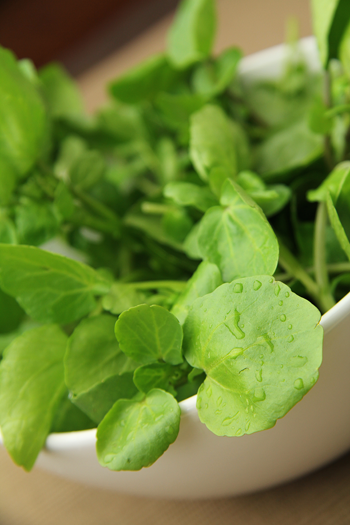For those who prefer metric to imperial measurements or vice versa, I've added a new section to the blog which allows you to download some handy conversion charts. So whether you like pounds, ounces or grams, kilograms, fluid ounces, pints or millilitres etc. I think I may have it covered.
There's also a useful oven temperatures guide too if you're getting hot headed over celsius, fahrenheit or gas marks.
Visit the Kitchen Helper page for all the info.
Tuesday, 31 May 2011
Tuesday, 24 May 2011
Farmers swing open their gates to the public
The opportunity to experience at first-hand what life is like on a real working farm is within reach for all of us on 12 June. Each year British farms open their gates as they take part in the event organised by LEAF (Linking Environment And Farming) and this year over 450 farms across the country are involved.
I see an event like this to be so educationally valuable in a time where many children seem to have no idea where their food comes from. The understanding of our food's origins and how it finally gets to our plates is very important if British farming is to thrive.
Open Farm Sunday Facts
- LEAF’s Open Farm Sunday is the only day in the year when farmers across the whole of the UK unite to open their farms to the public.
- Hertfordshire LEAF Demonstration farmer, Ian Pigott took the idea from a similar event held in Denmark to LEAF (Linking Environment And Farming) and together they made the first event happen in 2006.
- The public think farmers are more important to their everyday lives than teachers, politicians or bank managers. When asked to rank a list of professions and trades, the public ranked farmers fourth, just behind doctors and nurses, firefighters and police officers.
- 29% adults say that they have never been on a working farm and only 31% have visited one in the past 4 years.
- 20% children in England have never visited the countryside and 27% 8-9 year olds have never come close to touching farm animals.
- A survey conducted as part of LEAF’s Open Farm Sunday 2007 showed that 35 per cent did not know that porridge comes from a British farm, 23 per cent of people did not realise that bread originates from a farm and 22 per cent did not believe that sausages and bacon originate there.
- The knowledge was even lower with younger adults, with 29 per cent of 16-24 year olds failing to recognise that bread originates on a farm, 34 per cent that sausages and bacon come from a farm and a massive 47 per cent did not know farmers are responsible for producing porridge.
So get out into the countryside, reconnect with nature, learn and have fun.
I know where I will be!
For information and to find a farm open near you visit: www.farmsunday.org
To keep up to date and share your farm experiences follow: twitter.com/openfarmsunday
Labels:
Events,
Farm,
News,
Open Farm Sunday
Thursday, 19 May 2011
Beyond the Garnish
Could watercress be the next superfood? Historically it is known to be a blood cleanser and more recently there have been suggestions that it could help to suppress certain cancers. Watercress does indeed contain lots of vitamins and minerals as well as antioxidant properties which are all good for our health. That said, it tastes so good and is versatile enough to be used in so many ways that it shouldn’t need to be bolstered by a health PR campaign to make us eat it.
It may be an acquired taste for some people, the peppery flavour can be quite strong and might be a shock to younger palates. My Dad used to stuff it generously into sandwiches, but it was only after several tries that I grew to like it.
Hertfordshire has long been known for commercially cultivating watercress, the Sansom family have been doing so for five generations and Nine Wells Farm in Whitwell near Hitchin, is probably the closest producer to us here in Letchworth.
It is nice to think that we have a plentiful supply on our doorstep, so expect to find it in local delicatessens, farm shops and greengrocers. I have even found bags of supermarket watercress with ‘Herts’ as the place of origin, so you never know.
May sees watercress being celebrated with its very own ‘week’, the perfect time to explore this humble leafy plant. Experiment with it and don’t just leave it to languish as an undervalued salad garnish on the side of the plate.
Having such a robust almost mustard-like taste, it can be used very much as an ingredient, giving flavour as well as the crunchy juicy texture coming from the stalks.
Try it roughly chopped and stirred through mashed potatoes or it makes an interesting filling for an omlette along with some mushrooms and Stilton cheese.
I’ve even made pesto using it, instead of basil, which is lovely stirred through some pasta with smoked salmon.
Watercress Soup
To extract all the gorgeous green goodness, a watercress soup is refreshing and an ideal lunchtime treat, but it is also elegant enough to serve as a dinner party starter.
Take care not to overcook the soup once the watercress is added as this will destroy the flavour and the colour may not be so appealing.
Ingredients
1 onion, peeled and roughly chopped
25g butter
250g potatoes, peeled and diced
600ml chicken or vegetable stock
2 x bags (about 150g) of watercress, roughly chopped
50ml cream
a little milk if needed
salt and black pepper
Method
In a large pan gently melt the butter, add the onion and cook the onion until soft and translucent but not browned.
Add the potatoes and stock and cook until the potatoes are soft, for approximately 15-20 minutes. When potatoes are almost cooked, add the watercress and cook no longer than 5 minutes. Tip into a liquidiser, add the cream and blend until smooth. Use a little extra milk if the soup seems too thick. Season with salt and black pepper and serve hot. Drizzle with some extra cream to serve.
Food photos: ©childsdesign 2011
My article previously published in Letchworth Living magazine. (May 2011 edition) www.letchworthliving.co.uk
Wednesday, 4 May 2011
Seasonal Tips
The wonderful thing about eating seasonally is that it really makes an occasion out of consuming the best produce. The British asparagus season is finally upon us and I've enjoyed the building anticipation before it finally arrive in the shops.
Foreign asparagus is available all year round and I think it has diminished the specialness of it, plus, in my opinion, you really can't top the British variety.
 Although I enjoy doing some kitchen gardening, I've never attempted growing asparagus myself as I confess I'm rather too impatient. From planting the crowns, I believe it takes around a cycle of two years before it reaches maturity and is good enough to harvest. I think I'll leave that to the experts. Once fully flourishing though, the spears can be cut after which it takes only 24 hours for a new shoot to appear and grow to an appreciable length. After a slow start it goes off like a rocket!
Although I enjoy doing some kitchen gardening, I've never attempted growing asparagus myself as I confess I'm rather too impatient. From planting the crowns, I believe it takes around a cycle of two years before it reaches maturity and is good enough to harvest. I think I'll leave that to the experts. Once fully flourishing though, the spears can be cut after which it takes only 24 hours for a new shoot to appear and grow to an appreciable length. After a slow start it goes off like a rocket!Recently I discovered that it tastes so much better if you roast it.
The flavour becomes concentrated, something that boiling takes away. Just get your oven nice and hot, put the spears into an ovenproof dish, drizzle with some olive oil, pop in the oven for about 10 minutes and you have perfectly cooked asparagus.
The flavour becomes concentrated, something that boiling takes away. Just get your oven nice and hot, put the spears into an ovenproof dish, drizzle with some olive oil, pop in the oven for about 10 minutes and you have perfectly cooked asparagus.
I made a dish, this way (recipe here) using wild venison chorizo from
Great Glen Game, which complements the minerally taste of the asparagus so well.
Asparagus Tip: To keep the spears fresh treat them as you would cut flowers. Trim off a small amount from the bottom of the stems, place them in a jug of water and store in the fridge.
Great Glen Game, which complements the minerally taste of the asparagus so well.
Asparagus Tip: To keep the spears fresh treat them as you would cut flowers. Trim off a small amount from the bottom of the stems, place them in a jug of water and store in the fridge.
Photos: ©childsdesign 2011
Labels:
Asparagus,
Great Glen Game,
Vegetables
Subscribe to:
Comments (Atom)












